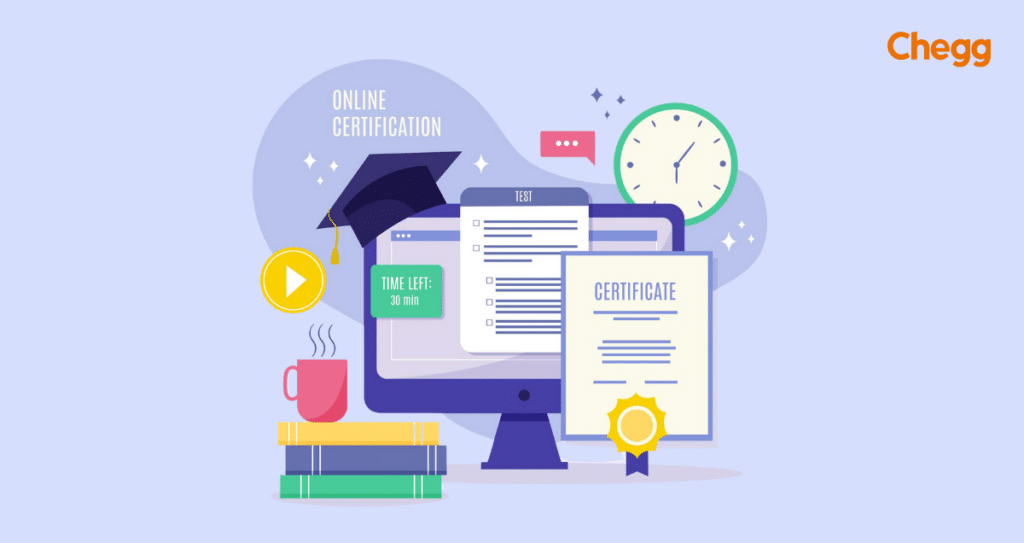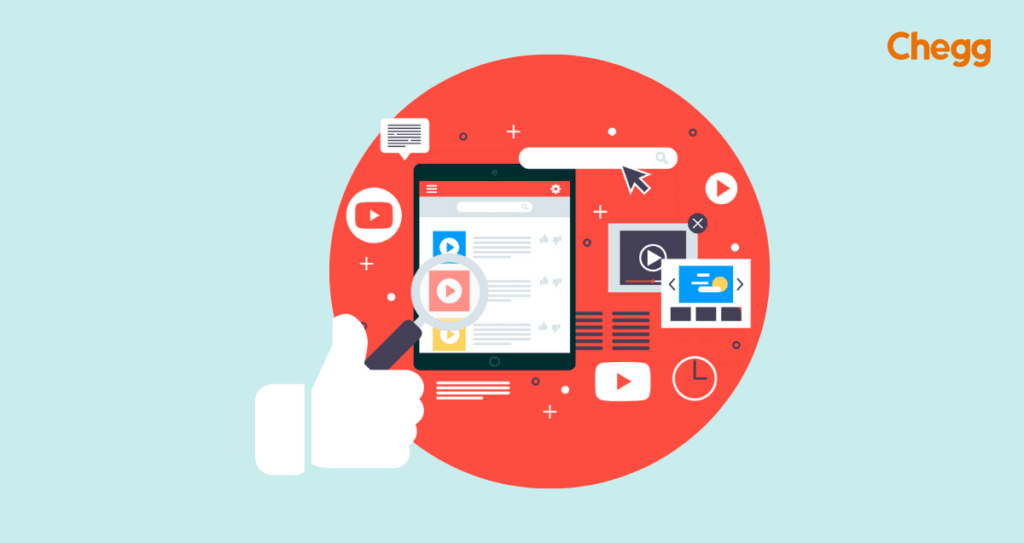

Quick Summary
- Leverage affiliate marketing by incorporating affiliate links into your blog content to earn commissions from sales generated through your referrals.
- Offer premium content such as e-books, online courses, or membership areas for readers willing to pay for in-depth knowledge and specialized resources.
- Utilize sponsored posts by partnering with brands and companies to write promotional content and boost your earnings.
Table of Contents
Blogging has become a powerful platform for sharing ideas, insights, and experiences. Beyond its role as a creative outlet, blogging has become a lucrative opportunity for those seeking to turn their passion into a career and make money blogging. As the digital landscape continues to expand, so do the opportunities for bloggers to monetize their content and generate income.
This article explores the top 10 effective ways to make money blogging, delving into proven strategies that successful bloggers employ to not only sustain their passion but also to turn it into a sustainable source of income. Whether you’re an experienced blogger looking to diversify your revenue streams or a newcomer eager to embark on a profitable blogging journey, this comprehensive guide will provide you with actionable insights and practical tips to monetize and make money blogging effectively.
What is a Blog
Blog is the short version of the word “weblog” which means an online journal and informational website that displays and dispenses information about a topic in reverse chronological order. The latest posts appear first, the second post, and so on. Also, it serves as a medium for a person or group to write and share their knowledge, understanding, and skills about some discourse, place, or any topic of interest. People invested in any particular field chose this medium to showcase their learning and disseminate information. It makes the lives of other people easy, and a blogger earns money from it. Blogging is more like typing and earning in return. You can see how people are earning through typing here.
You might be wondering what a blog is all about on the web. Well, to make things easy for you, read out the most trending topics for blogging in 2024 by Wix Blog, a significant player in the blogging industry:
- Food Blogs
- Travel Blogs
- Health and Fitness Blogs
- Lifestyle Blogs
- Photography Blogs
- Fashion and Beauty Blogs
- Personal Blogs
- DIY Craft Blogs
- Parenting Blogs
- Music Blogs
- Business Blogs
- Art and Design Blogs
- Book and Writing Blogs
- Personal Finance Blogs
- Interior Design Blogs
- Sports Blogs
- News Blogs
- Movie Blogs
- Religious Blogs
- Political Blogs
Importance of Blogging
The primary use of blogging nowadays is to promote business and entrepreneurship. Blogs serve as a medium to attract your target audience and effectively endorse your product. Without a blog, your personal or business website may remain hidden from potential customers, denying them access to your content or business expansion plans. A consistently updated blog improves your website’s search engine optimization, attracting more clients over time. As your blog becomes more frequent and authoritative, it establishes your niche authority and builds a brand for your product on the web, contributing to your ability to make money blogging.
How to Make Money Blogging?
A few years ago, blogging was merely considered a hobby and not a viable income source from blogging. Most people used the platform to express their feelings, share knowledge, and raise awareness about various topics. It was primarily a pastime for those who enjoyed writing.
In recent times, however, making money blogging has evolved into a significant opportunity. It has become a profession that allows individuals to earn income from the comfort of their homes.
One of the most remarkable aspects of blogging is that it doesn’t require any specialization or formal training to make money blogging. If you have a knack for writing and possess deep, authentic knowledge about a topic, you can succeed. Choosing the right words and endorsing relevant products for your readers are key considerations in monetizing your blog. Blog earnings are directly tied to your traffic—more viewership means higher earnings from your blog.
To make it easier for you to understand the ideal ways to make money blogging, we have jotted down a few tips:
- Create fresh and updated blogs that contain ideally 1000+ words;
- Make sure the blog has relevant do-follow backlinks as they generate commissions for a blog;
- Make room for display ads on the blog. Also, you need to put them in the blog strategically;
- Google AdSense is one of the unique platforms for this;
- Use of affiliated links for the promotion of products you will be endorsing;
- To add value-added products & services, tie-up with relevant and related products / services;
- Selling of guest blogs and niche edits are also recommended.
Understand the Basics of Online Money making Blogs
For your blog to attract substantial traffic and make money blogging, mastering the basics of blog preparation is crucial. With numerous competitors who already make money blogging, it’s essential to excel in blogging and rank high in search engine results. Here are some critical considerations to keep in mind when writing a blog to effectively make money blogging:
- Construct catchy and attractive headlines;
- Inclusion of keywords in the blog;
- Reveal your knowledge as explicitly as you can without making it more complicated;
- Stick to the originality of your content;
- Understand the need and interests of your target audience;
- Make sure your content is based on the contemporary times;
- Appeal to the reader through a curious call-to-action (CTA) material;
- Keep in mind the basics of Search Engine Optimization (SEO);
- Keep the blog short, easy to comprehend, and reader-appealing.
How Does Blogging Earn Money?
Those who possess unique skills, knowledge, or specializations can start sharing their expertise and earn money in return. Blogging offers flexibility in working hours, making it one of the best suitable jobs for housewives. Explore suitable job options for housewives and vibrant niches in the blogging world that can help you make money blogging:
1. Specialization in Skills like Music, Dance, Musical Instrument, Yoga, etc.
There is significant demand for courses among the masses as people love to do something unique to occupy themselves with. Dance, musicals, yoga, art and craft, and many other techniques are in great demand. Both young and adults prefer these courses. Writing about them and sponsoring the same on the web can be a good breakthrough for your money-making blogging career.
2. Academic Subject Matter Expert
If you have a good grasp of an academic subject, you can start blogging about the website and make money through the blog. Creating blogs based on subject knowledge creates room for essential stakeholders like parents and teachers to invest gleefully. Think no more about how to earn money from blogging if you have a good grasp of content and about which you can write plenty. With subject content, not only will you be inviting real-time page viewers who will be ready to invest money, but you will also generate a lot of traffic overall. Also, find out the major players for online tutors.
3. Topics of Common Trends
People are curious about so many things that you can’t even imagine. Doing extensive research and writing about things that will invite the attention and curiosity of the general public will give your website due diligence and brand value. Not to mention a more extensive viewership hence a better commission for the advertisement you will be endorsing. All you need to do is be vigilant of the following trends and make sure your blog has catchy headlines and is accordingly Search Engine Optimization friendly.
4. Health and Wellbeing
Health and wellbeing are essential topics of discussion regarding earning through blogging. There are hundreds of blogs and write-ups about nutrition, sciences of exercise, physiotherapy, treatments for disease and much more. Writing about these topics requires a comprehensive understanding. Once your page starts showing up in the search engine, and your blogs begin to make an impact, your target audience will appear more frequently.
5. Psychology and Emotional Intelligence
One of the major concerns of modern society is the degradation of emotional intelligence. Moral dilemmas, depression, anxiety issues and panic attacks are prevalent among people. These affect not only the personal relationships of human beings but also their productivity among them. Such topics also cover issues and concerns like attitude, personality development, creativity and self-discovery journey. Authentic online money-making blogs about them will allow you to discover people with real issues, and thus, eventually, you will have clients ready to buy from your websites.
6. “How to” Blogs
The “How To” blogs are also one of the best sources of making money blogs. You have to be creative about these blogs as you will be providing creative solutions to do things. They are a prevalent genre of blogs as Internet users frequently use search engines for creative ways to do normal things or look for suggestive solutions for daily happenings. You must be vigilant about the most common “How To” blog trends to seek the viewers’ attention.
7. Relationships
Writing blogs about human relationships are also some of the most creative ways to attract traffic on the web. Young men and women will be your target mainly. It would help if you let them explore different aspects and possibilities of a relationship. You can write about novel things like open relationships, monogamy, polygamy, intimacy, rebound strategies, and other topics of interest. Once you’re successful in making them read the blog, there are fair chances that they will become your clients and might also be a possible catch for the advertisements on your blog.
Money making through the blog will be then easier for you as you will have more viewership.

8. Tour and Travel
Blogs about travel and tourism are also a great source of making money through blogs. Such blogs have one of the highest rates of advertisements as you will get a lot of affiliate websites. You can write various topics on a tourism blog. Writing about tourist spots, affordable hotels, routes, financial knowledge, and so on will invite many readers. For such blogs, you will get affiliate websites for hotels, travel services, cafes, and services essential for tourism. A vivid and nicely written blog will get you a lot of commission on the advertisements.
9. Fashion
Fashion blogs attract great traffic as a lot of people look for the best combination of attire for a wedding, a carnival, or such events. The Internet is the best place to look up to for what’s happening in the world. You can write about traditional dresses in places, a combination of dresses, a color that goes with each other, and many other vibrant topics. You will also have the autonomy to explain the texture and specialty of the clothes. Money-making blogs for fashion also attract affiliated websites, so revenue generation becomes easy.
10. Book Reviews
Book review blogs are one of the most accessible blogs to write for a book lover. Your target audience is voracious readers. All you’ve got to do is read books commonly preferred by general readers and write about them. You have to reveal the intricacies of the book in a speedy summary of it and invite the reader’s curiosity. Book lovers are one of the most accessible audiences you can target through your income-generating blogs, as they are easy to fall for.
What are Some of the Ways to Make Money Through Blogging?
1. Advertisement Blogs
Selling products and services through advertisement blogs is a crucial platform for making money through blogging. As a blogger, your job is to write and display the product suitably and attractively to the page viewer. Using the suitable mechanism, you will develop the visitor’s interest. Making money blogging is directly proportional to the number of visitors you will have on your web page.
Related Article: How to Sell Products Online – High Profit Making
2. Affiliate Marketing
Affiliate marketing is also an important strategy to generate income through blogging. Here, the blogger works as a third-party product publisher and directs the blog viewers to the company’s products. Or this purpose, the blogger gets a piece as a commission on the sale of the items. The blog’s job is to generate traffic and provide leads to the company’s product. Affiliate marketing has been very vibrant in the blogging world as it has been key to selling products online and eventually paying the blogger in real terms.
3. Digital Products Like eBook Marketing
It is one of the ways to earn a handsome passive income. If you think you have a lot to share and can compile it in a structured format, it is a way to get money just by sitting on your couch. Several free websites can help you to design your layout of contents. For example, Canva , Kindle Create, etc. Some of the platforms to publish your book online are:
- Amazon Kindle
- SmashWord
- Draft2digit
- Gumroad
Some of the domains in which you can write an e-Book:
- Any set of specialization that is common among the general public;
- Guide to succeed in any area;
- Fiction;
- Non-Fiction.
4. Consultation Services
Consultation services include Marketing Consulting, Financial Consulting, HR Consulting, Compliance Counselling, Legal Consultancy Services, Information Technology (IT) Consultancy, and many others. Online blogging about them will generate a lot of traffic and endorses more viewership. For money-making blogging, writing about them can change a blogger’s fortune.
5. Skill-based Services
Blogging about the provision of skill-based services and promoting them through catchy headlines and intelligent content is one of the ways to create money-making blogging. The benefits include art and craft, health and wellbeing, psychological empowerment, and so on. Promoting them on an online platform through blogs is a hassle-free technique.
6. Works with Online Advertisement Networks
Blogging in connection with online advertisement networks and creating content for them is also considered the most innovative way to generate income through blogging. A blogger can try to connect with their target audience, utilizing online advertisement networks and promoting the target product.
Path to Become a Successful Blogger
From affiliate marketing and sponsored content to digital product creation and online courses, the possibilities for income generation are as diverse as the content you create. The key lies in understanding your audience, delivering value, and implementing monetization methods that align with your brand and resonate with your readers.
As you embark on your blogging venture or seek to elevate your current strategy, remember that success in the blogging world is often a combination of dedication, adaptability, and a genuine connection with your audience. While the methods discussed in this article provide a solid foundation, it’s essential to stay informed about emerging trends and continually adapt.
Frequently Asked Question (FAQ):
Q.1 How many views do you need to make money on a blog?
Answer:There’s no straightforward answer to how much money you can make through a blog, as it hinges on various factors like traffic, SEO effectiveness, views, and more. Your blogging income also relies heavily on the type of content you create. Content that is urgent and user-friendly has a higher chance of attracting a larger audience and thereby increasing your income. Explore more about how to make money through blogging at Chegg and kickstart your earning journey today.
There is, however, a general trend that follows regarding the payment, which finds that upon getting 1,000-page reviews a month, you will make about $10-$25 per month. The number goes up as it attracts more readers every month.
Q.2 Can you make money blogging?
Answer: The world has changed a lot after it has become a global village where information is abundant in both time and space. One can have access to information about anything and learn about almost any topic. The world is at your fingertips. That is where the money-making blogging at Chegg comes into play.
If you have the skill and talent for blogging, you can easily make money sitting in the comfort of your home. All you need to do is do extensive research about a topic and display or write about it, and you will get paid for your work. There are tons of people out there who are making a lot of money sitting at home. They are dispensing information on different topics and earning hefty amounts from blogging.
Q.3 What should I blog about to make money?
Answer: While blogging you need to make sure your blogs are about something very user-friendly in nature. Nobody will pay heed to a blog written about trivial topics. There is a wide range of topics about which you can write. It can range from health and fitness to fashion, lifestyle, entrepreneurship, technology, gaming, travel, camping, tourism, finance and investment, and many others. People love to know and explore things, which is what a money-making blogger needs to optimize. Once you deliver what you want to know about, you will attract a lot of traffic to your page, and in return, you will be paid for your content.
Q.4 How will you receive blogging payments?
Answer: Payments for blog writing and making money blogging are typically facilitated through various channels. Popular methods include PayPal, Payoneer, RazorPay, Wire Transfer, and Western Union. PayPal, widely favored for its extensive reach, dominates the market. However, due to its availability limitations in certain countries, bloggers often seek alternative payment methods to receive earnings from their blogging efforts.
The blogging payments for Google Ads are done through Google AdSense Account. It is more like a gateway to the payments for your blogging and payments that you will have further. You will also be asked to add the bank details under the Electronic Funds Transfer column. The process takes a few weeks to initiate, but it is worth the wait as a world of excitement awaits you.
Q.5 Do bloggers make money Blogging?
Answer:The process of earning money through blogging has become remarkably hassle-free in modern times. Bloggers generate income by writing about topics that captivate their audience. A primary source of revenue for bloggers is advertisements. Each time a viewer clicks on an affiliate link embedded in your blog and makes a purchase, you earn a commission from the sale. This straightforward process allows bloggers to effectively make money blogging.
Q.6 How do you start your blog for free?
Answer: Before you start a blog of your own, you must understand the what’s and why’s of your blog. Once you have a clear idea about it, you need to find a suitable blogging platform where you will be choosing a domain name. You will also need to create a web hosting account to serve as a platform for your blog writing. Upon installing WordPress on your blog, you can start writing and publishing your blogs.
Blogging with WordPress is both free and easy to publish the write-ups. Start your blogging career with WordPress today and embark on your make money blogging.
Q.7 What are the most popular blogging platforms?
Answer: WordPress, Wix, Squarespace, LinkedIn, and Medium rank among the most popular blogging platforms. Among these, WordPress stands out as the most used for its user-friendly interface and accessibility. Wix is favored for professional blogs, while Squarespace appeals to artists and designers showcasing their work. LinkedIn excels in networking and connecting with target audiences effectively. Medium, known for its built-in audience, is preferred for its publishing capabilities and community engagement, making it a choice platform to make money blogging.
Chegg has been one of the platforms where you can learn areas to work and earn money online. All the platforms are equally important as they serve a purpose for a blogger in different ways throughout. It’s up to the make money blogging to utilize the venues for his interest and make money.
To read more related articles, click here.
Got a question on this topic?



